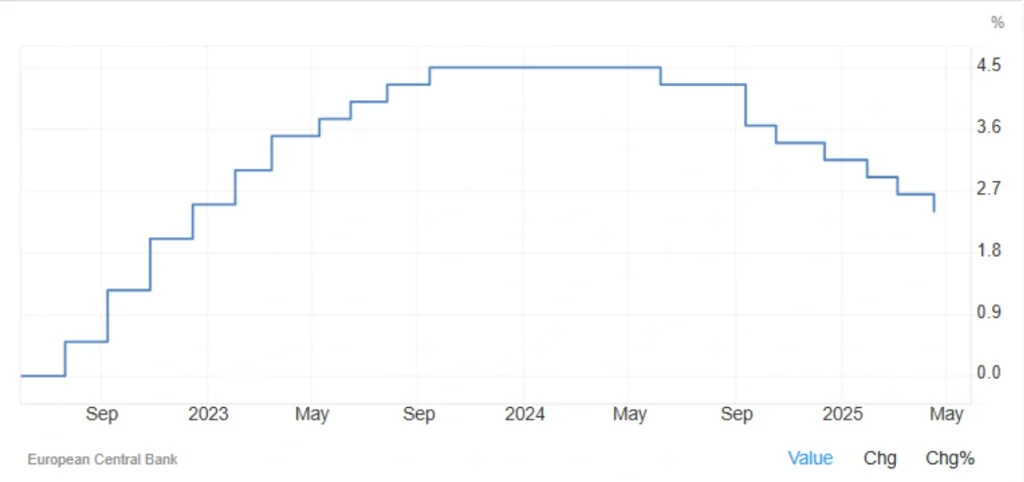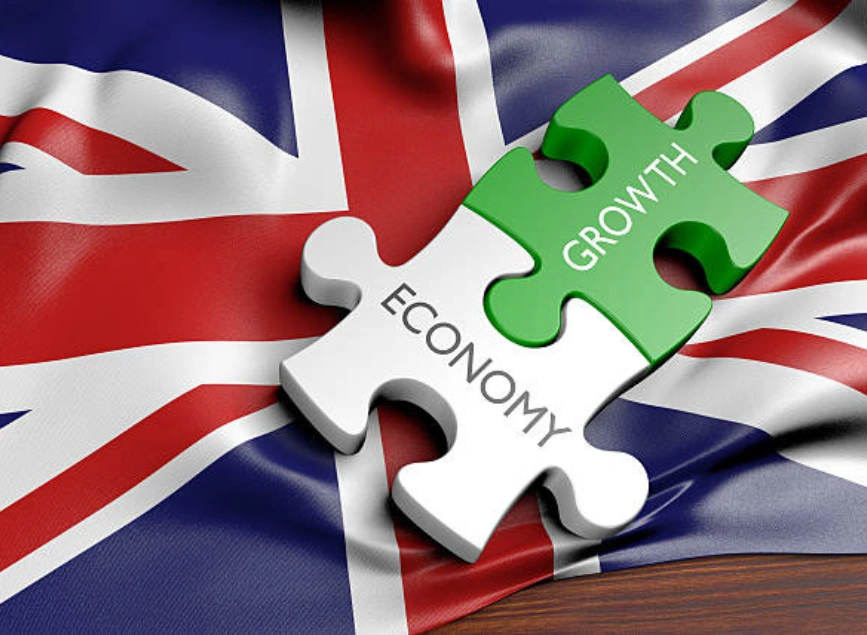
ECB Cuts Interest Rates: Is 2% Inflation Back in Sight for Europe?
In its latest meeting, the European Central Bank (ECB) cut all three of its key interest rates by 25 basis points, aligning with market expectations. The move reflects the ECB’s confidence in the continued decline of inflation and aims to ease financial conditions across the eurozone.
The new rates are as follows:
- Main Refinancing Rate: reduced to 2.40%
- Deposit Facility Rate: down to 2.25%
- Marginal Lending Facility: lowered to 2.65%
Key Reasons Behind the ECB’s Decision
🔹 Falling Inflation
Both headline and core inflation have continued on a downward path, with notable cooling in service sector inflation as well.
🔹 Moderation in Wage Growth
Wage growth is adjusting, and businesses are increasingly absorbing cost pressures rather than passing them on to consumers.
🔹 Weakening Economic Growth
The ECB acknowledged that the eurozone’s growth outlook has deteriorated. The rate cut is intended to support economic activity in the face of global challenges.
🌍 Global Risks and Their Influence
Ongoing trade tensions—particularly between the U.S. and China—are weighing on market sentiment. Tightening global financial conditions also pose a significant risk to the euro area’s outlook.

ECB’s Key Interest Rates – A Quick Guide
- Main Refinancing Rate (Refi Rate): The primary rate at which banks borrow short-term funds from the ECB
- Deposit Rate: The rate paid to banks for overnight deposits at the ECB
- Marginal Lending Facility: The emergency lending rate banks pay for short-term liquidity
✅ A rate cut is generally seen as a pro-growth and inflation-supportive signal, especially when inflation is trending down and growth is subdued.

📊 Outlook for ECB Policy in the Coming Months
🔹 Cautious, Data-Dependent Approach
The ECB made no forward commitment to further cuts, emphasizing instead that future decisions will depend entirely on inflation data and economic performance.
🔹 Market Expectations
With inflation easing and growth remaining weak, markets still anticipate further cuts in the second half of 2025. However, should trade tensions worsen or energy prices spike, the pace of rate cuts could slow.
Summary
The ECB’s decision to cut rates signals growing confidence in the downward inflation trend and a commitment to supporting the eurozone’s sluggish economy. Yet policymakers wisely avoided making long-term promises, opting instead for a flexible, data-driven strategy going forward.
Share
Hot topics

Will 2026 Be a Turning Point for Crypto Regulation in the U.S.?
The cryptocurrency world is gearing up for a transformative year as a pro-crypto administration, led by Donald Trump, prepares to take charge in the United States. With a Congress expected...
Read more




Submit comment
Your email address will not be published. Required fields are marked *